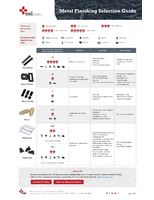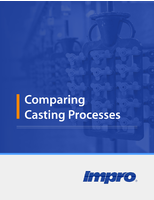Proposed ASTM Standard aids in moisture tests.
Press Release Summary:
Under jurisdiction of Subcommittee C16.33 on Insulation Finishes and Moisture, proposed standard, WK16466, will aid laboratories and materials manufacturers in testing moisture properties in construction materials. Standard focuses on test for pressure plate apparatus, which is used to characterize ability of materials to hold moisture under very high relative humidity conditions greater than 97%.
Original Press Release:
Proposed ASTM Pressure Plates Standard to Aid in Moisture Tests
Work is continuing on a proposed new ASTM International standard that will aid laboratories and materials manufacturers in testing the moisture properties in construction materials. The proposed standard, WK16466, Test Method for Moisture Retention Curves of Porous Building Materials Using Pressure Plates, is under the jurisdiction of Subcommittee C16.33 on Insulation Finishes and Moisture, part of ASTM Committee C16 on Thermal Insulation.
"In the pursuit of energy efficiency, buildings are now constructed with much greater air tightness than previously," says Therese Stovall, senior research engineer, Oak Ridge National Laboratory and Committee C16 member. "Higher levels of insulation are also now used, which has changed the temperature profile within building envelope elements." These two factors have combined to produce a large number of building envelope failures due to damage caused by excessive moisture.
According to Stovall, one important tool in avoiding failures due to moisture is a detailed moisture analysis of any proposed envelope design. While a number of test methods have been developed to meet this need, WK16466 focuses on a test for the pressure plate apparatus, which is used to characterize the ability of materials to hold moisture under very high relative humidity conditions - greater than 97 percent.
Stovall encourages all interested parties to participate in the development of WK16466. "There are several experimental parameters that will likely influence the results and we are still seeking to define the best approach," says Stovall. "First, we are seeking observational input from any laboratory that has made or attempted to make such measurements. Second, we will be seeking participation in interlaboratory comparisons to define the precision of the procedure."
Stovall also points out that the U.S. Department of Energy, through the Building Technology Program in the Office of Energy Efficiency and Renewable Energy, is supporting the development of the proposed test method and the characterization of a limited library of materials, but that it would like to transfer the implementation to commercial laboratories as soon as feasible.
For further technical information, contact Therese Stovall, Oak Ridge National Laboratory, Knoxville, Tenn. (phone: 865/574-0329; stovalltk@ornl.gov). Committee C16 meets April 6-9 at the April committee week in Anaheim, Calif. For membership or meeting information, contact Timothy Brooke, Technical Committee Operations, ASTM International (phone: 610/832-9729; tbrooke@astm.org).




